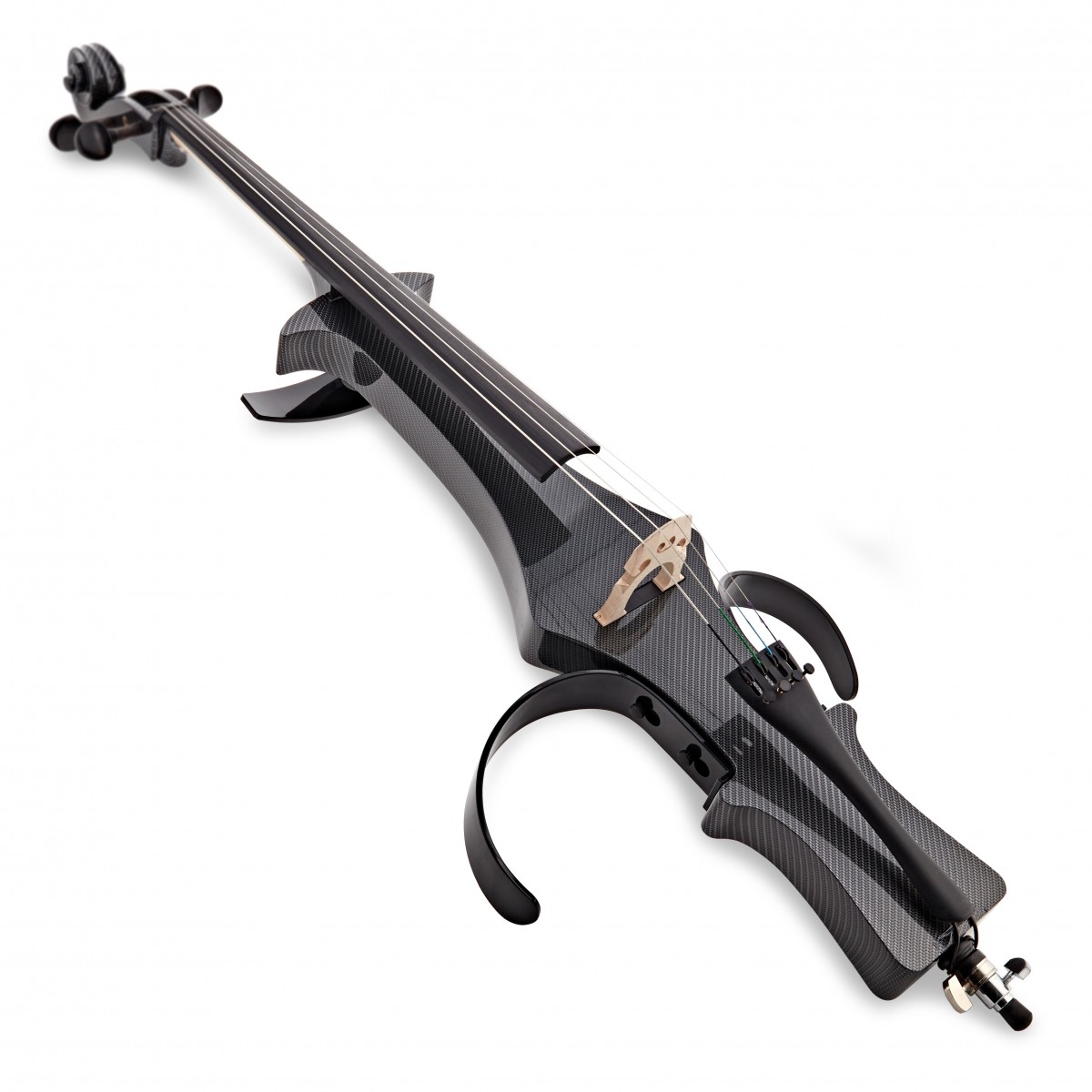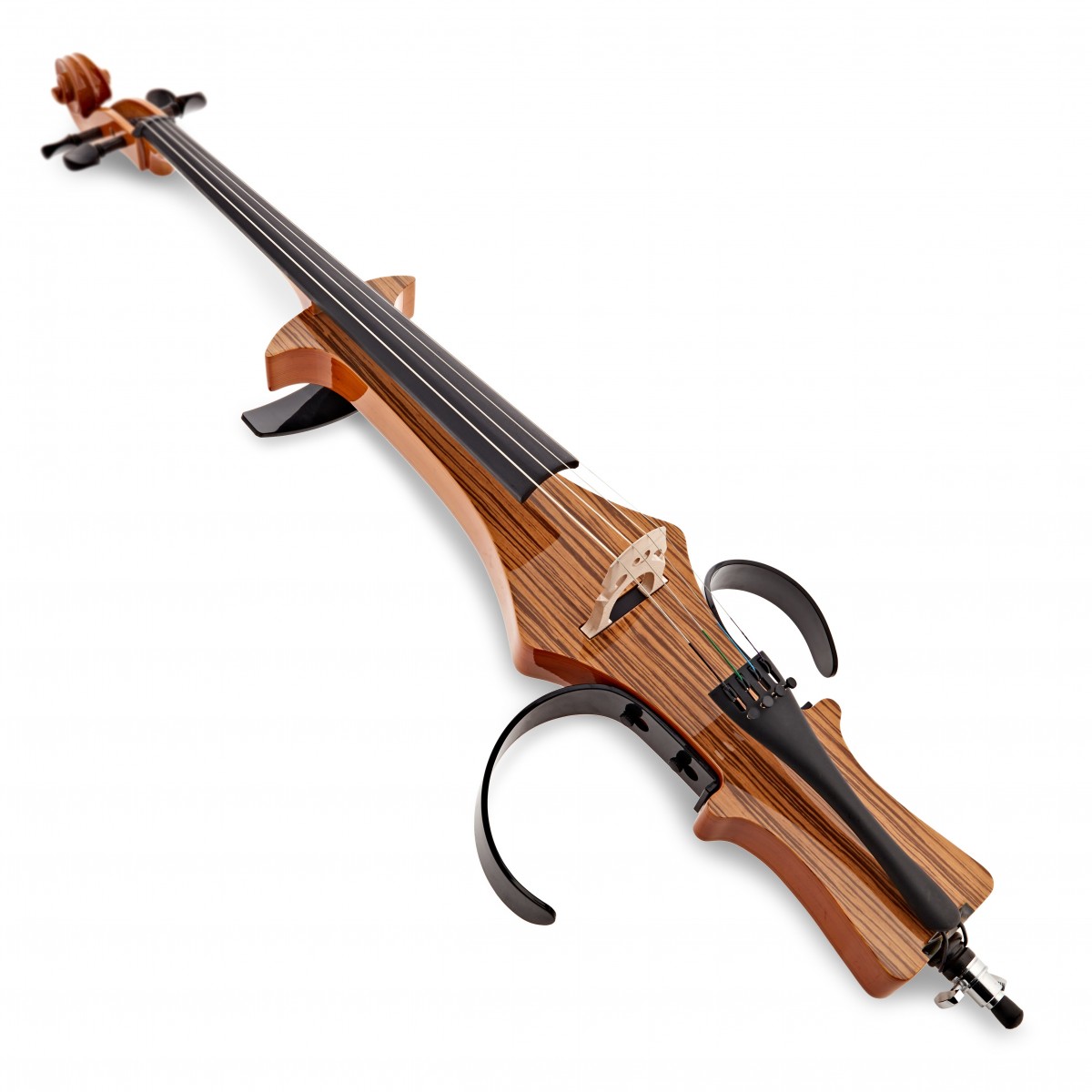Electric cello
Bowed Instruments
America
Between 1901 and present
Video
The electric cello is a modern adaptation of the traditional acoustic cello, designed to be amplified electronically. Unlike its classical counterpart, it typically lacks a resonating wooden body, instead featuring a minimalist frame to support playability and maintain the essential dimensions and feel of the cello.
The sound is generated using electronic pickups, allowing for amplified projection, tone manipulation, and effects processing, making it a versatile instrument for various musical styles. The electric cello is a bowed string instrument belonging to the larger family of stringed instruments. It falls under the category of electro-acoustic instruments, which rely on electrical amplification to produce sound. Some models integrate digital technology, making them hybrids between acoustic and electronic instruments.
Historical Background
The electric cello has its roots in the 20th century, originating as part of the broader trend of electrifying traditional string instruments. While cellos have been played for centuries as part of orchestras and chamber music, the need for amplification led to the development of electric versions in the mid-20th century. The earliest electric cellos emerged in the 1930s and 1940s, though they remained niche for several decades. The instrument gained more recognition in the late 20th and early 21st centuries, particularly as musical genres such as jazz, rock, and contemporary classical music began integrating amplified string instruments.
The electric cello is primarily associated with Western countries, particularly the United States and Europe, where innovation in electric string instruments flourished during the 20th century. Advancements in electronics and sound processing further refined its design and capabilities.
Made Of
Electric cellos are constructed from a variety of materials, differing significantly from traditional wooden acoustic cellos. They often feature a solid or semi-hollow body made of wood, carbon fiber, metal, or composite materials. The fingerboard is usually made from traditional materials such as ebony or rosewood, ensuring durability and a familiar feel for players transitioning from acoustic instruments. The instrument’s electronic components, including pickups, preamps, and output jacks, are integrated into the design, allowing for direct amplification and effects processing.
Types of Electric Cellos
Electric cellos come in several varieties, each catering to different needs and playing styles:
Solid-body electric cello – Lacks a resonating chamber, relying entirely on electronic amplification for sound production.
Semi-hollow electric cello – Features a small resonating chamber to provide some acoustic presence while still benefiting from amplification.
Fretted electric cello – Includes frets to help with precise intonation, useful for genres such as jazz and rock.
Five- or six-string electric cello – Extends the traditional four-string range, adding lower or higher strings for greater versatility.
Silent cello – Designed for practice, these models allow for near-silent playing through headphones.
Characteristics
The electric cello retains the fundamental features of its acoustic counterpart while incorporating modern enhancements. Key characteristics include:
- Portability – Often lighter and more compact, sometimes collapsible for easy transport.
- Adjustable tone – Through equalization settings and effects, players can modify their sound significantly.
- Durability – Modern materials make them more resistant to environmental factors than traditional wooden cellos.
- Versatility – Suitable for multiple genres, including classical, rock, jazz, and electronic music.
Sound Production
Unlike an acoustic cello, which produces sound through the vibration of its wooden body, the electric cello generates sound primarily through electromagnetic or piezoelectric pickups. These pickups capture string vibrations and convert them into electrical signals, which are then amplified and processed. The absence of a resonating body means the raw sound is quieter, but amplification allows for a wide range of tonal possibilities. Players can use effects pedals, loop stations, and digital processors to create unique sounds beyond the traditional cello’s range.
Playing Methods
The playing techniques for the electric cello largely mirror those of the acoustic cello, including bowing (arco) and plucking (pizzicato). However, the instrument’s design and amplification capabilities allow for additional techniques:
- Use of effects pedals – Enables distortion, reverb, delay, and looping, expanding sonic possibilities.
- Alternative bowing techniques – Some players experiment with percussive or extended bowing techniques.
- Hybrid playing – Combining bowing with electronic manipulation, such as MIDI integration.
Roles in Music
The electric cello has carved out a distinct place in various musical genres:
- Classical music – Used in contemporary compositions and experimental classical performances.
- Rock and metal – Popularized by bands such as Apocalyptica, where electric cellos replace traditional guitars.
- Jazz – Offers smooth, expressive tones suitable for improvisation.
- Electronic music – Integrated with synthesizers and digital effects for innovative sounds.
- Film scores – Provides haunting, ethereal tones for cinematic music.
Cultural Significance
The electric cello represents a fusion of tradition and innovation, symbolizing the evolution of string instruments in modern music. It has played a role in expanding the reach of cello music beyond classical circles, allowing for greater experimentation and crossover into mainstream genres. By enabling cellists to perform in amplified settings, the electric cello has helped bridge the gap between classical string traditions and contemporary musical expressions.
From concert halls to rock stages, the electric cello continues to shape the musical landscape, offering both professional musicians and experimental artists a powerful and expressive tool. As technology advances, its role in music is likely to grow, further cementing its place as a dynamic and versatile instrument in the global musical lexicon.
FAQ
What is the origin of the electric cello?
The electric cello originated in the 20th century as a modern adaptation of the traditional cello. It was designed to provide amplified sound and eliminate acoustic feedback. Companies like Yamaha and NS Design popularized it in the late 20th century. Today, it is widely used in various genres, from classical to rock.
What are the key features of an electric cello?
Electric cellos have a solid or semi-hollow body, reducing resonance compared to acoustic cellos. They often include built-in pickups, preamps, and tone controls for sound customization. Many models offer a sleek, modern design with lightweight materials. Silent playing with headphones is another key advantage.
Which compositions are written for the electric cello?
While electric cellos are used in various music styles, specific compositions include works by artists like Apocalyptica and Zoë Keating. Many contemporary composers create pieces exploiting its electronic capabilities. The instrument is also used in film scores, experimental music, and rock adaptations. Custom arrangements often explore its extended sonic range.
 Links
Links
References
Other Instrument
Categories



















